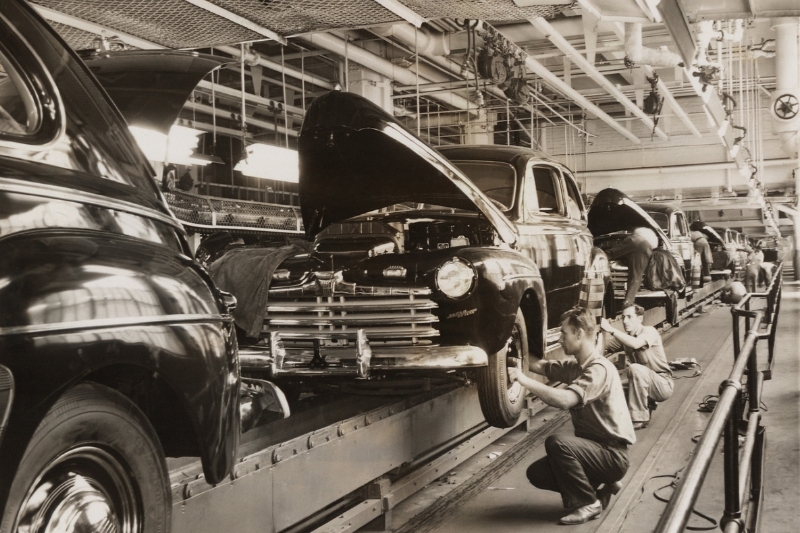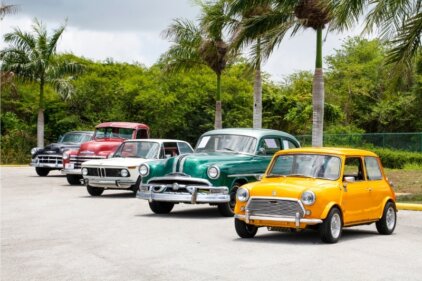From the humble beginnings of the horseless carriage to the sleek, high-performance marvels we know as supercars, the evolution of the automobile has been a captivating journey. In this article, we’ll delve into the captivating world of automotive history and explore the rise of the supercar, a testament to human ingenuity and the pursuit of speed, power, and style.
Early Milestones in Automotive Development
The origins of the automobile can be traced back to the late 19th century, when pioneering engineers and inventors like Karl Benz, Gottlieb Daimler, and Henry Ford began experimenting with self-propelled vehicles. These early prototypes laid the foundation for the modern car, with advancements in engine design, chassis construction, and overall functionality. As the 20th century dawned, the automobile industry experienced rapid growth, with manufacturers vying to create faster, more efficient, and more affordable vehicles for the masses.
The Birth of the Supercar
Amidst the ever-evolving automotive landscape, a new breed of vehicle emerged – the supercar. These high-performance machines were designed to push the boundaries of speed, power, and technological innovation. The term “supercar” is often attributed to the Lamborghini Miura, introduced in 1966, which captivated the world with its sleek, mid-engine design and blistering performance. This groundbreaking model set the stage for a new era of automotive excellence, inspiring other manufacturers to create their own high-powered, exclusive vehicles.
Evolution of Supercars over the Decades
As the decades passed, the supercar segment continued to evolve, with each new generation pushing the limits of what was possible. In the 1970s, iconic models like the Lamborghini Countach and Ferrari Dino captivated enthusiasts with their bold, angular designs and awe-inspiring power. The 1980s and 1990s saw the rise of supercars like the Porsche 959, Bugatti EB110, and McLaren F1, which introduced advanced materials, cutting-edge aerodynamics, and record-breaking performance. The 21st century has ushered in a new era of supercars, with models like the Bugatti Veyron, Koenigsegg Agera, and Pagani Huayra redefining the boundaries of speed and technological prowess.
Iconic Supercars that Defined Automotive History
Throughout the evolution of the supercar, certain models have emerged as true icons, defining the very essence of automotive excellence. The Lamborghini Countach, with its distinctive wedge-shaped silhouette and scissor doors, became a symbol of the supercar era in the 1970s and 1980s. The Ferrari F40, introduced in 1987, was a raw, uncompromising supercar that showcased the brand’s racing heritage and engineering prowess. More recently, the Bugatti Veyron and Chiron have set new benchmarks for top speed, power, and technological sophistication, cementing their place in automotive history.
Technological Advancements in Supercars
The rise of the supercar has been inextricably linked to the rapid advancement of automotive technology. From powerful, high-revving engines to lightweight, aerodynamic designs, supercars have consistently pushed the boundaries of what’s possible. The introduction of materials like carbon fibre, the implementation of advanced suspension systems, and the integration of cutting-edge electronics have all contributed to the ever-increasing performance and handling capabilities of these exceptional vehicles.
The Impact of Supercars on the Automotive Industry
The influence of supercars extends far beyond the confines of the high-performance segment. These elite vehicles have had a profound impact on the broader automotive industry, driving innovation, inspiring new design languages, and pushing the limits of what’s achievable. The technologies and engineering principles developed for supercars often trickle down to more mainstream models, elevating the overall quality, safety, and efficiency of the cars we drive every day.
The Rise of Electric Supercars
In recent years, the automotive landscape has been undergoing a significant transformation with the advent of electric vehicles. The supercar segment has not been immune to this shift, with several manufacturers embracing the potential of electric power. Models like the Tesla Roadster, Rimac Nevera, and Lotus Evija have demonstrated that electric supercars can not only match the performance of their internal combustion counterparts but in some cases, even surpass them. These electric supercars showcase the incredible potential of sustainable, high-performance mobility, paving the way for a future where speed, power, and environmental responsibility can coexist.
Future Trends in Supercar Design and Technology
As we look towards the future, the supercar segment is poised for even more exciting advancements. Autonomous driving technologies, advanced materials, and innovative powertrain solutions are just a few of the areas that will shape the next generation of supercars. Manufacturers are also exploring the integration of renewable energy sources, such as solar panels and regenerative braking systems, to further enhance the sustainability and efficiency of these high-performance vehicles. The supercar of the future will likely be a seamless blend of raw power, cutting-edge technology, and environmental consciousness, redefining the boundaries of what’s possible in the automotive world.
Conclusion
The journey through automotive history and the rise of the supercar has been a captivating exploration of human ingenuity, passion, and the relentless pursuit of excellence. From the humble beginnings of the horseless carriage to the sleek, high-powered marvels of today, the evolution of the automobile has been a testament to the transformative power of innovation. As we look towards the future, the supercar segment continues to push the boundaries of what’s possible, inspiring us to dream bigger, drive faster, and embrace the endless possibilities that lie ahead.





